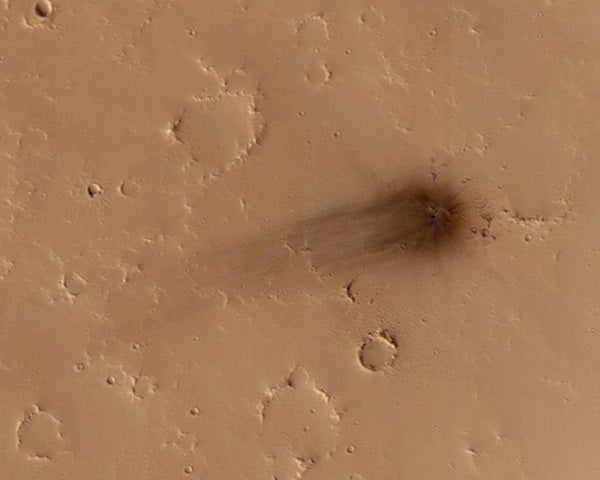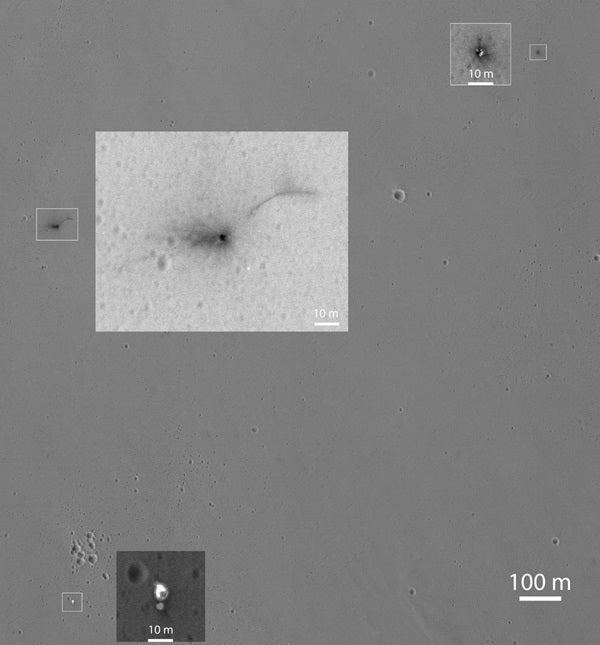The image above, acquired by the orbiter’s High Resolution Imaging Science Experiment is a compelling example. It shows a crater and blast zone from an impact that likely occurred as recently as this past August, and no later than January 2014, according to HiRISE scientists.
The crater is about 13 feet acrossis about 13 across. That means the asteroid or comet fragment that gouged it out was probably about three to six feet across.
I’m drawing that inference based on a 2013 study. HiRISE images showed that every year, the Red Planet is bombarded by more than 200 asteroids or comet chunks — and these typically measure three to six feet in diameter, with resulting craters at least 12.8 feet wide.
Mars gets blasted with such small chunks of interplanetary debris quite frequently because its atmosphere is thinner than our own. Here on Earth, asteroids and cometary bits that small tend to burn up before reaching the surface.
Before the incredibly high resolution images provided by HiRISE, it was difficult if not impossible for instruments in orbit to pick out the small craters carved into the Martian surface by such diminutive impactors.
And that’s not all that HiRISE has been able to spot on the Martian surface…
It also recently spied the impact site where the European Space Agency’s Schiaparelli test lander crashed into the Red Planet. The image above, acquired by HiRISE on Oct. 25, 2016, shows the area, with magnified insets of three sites where components of the spacecraft slammed into the ground.
The Schiaparelli lander was supposed to touch down gently on the surface of Mars on Oct. 19, 2016. Unfortunately, its rockets shut down while it was far above the landing site, and it crashed at about 180 miles per hour.
The Schiaparelli test lander was one half of ESA’s ExoMars project. Fortunately, the other half — the Trace Gas Orbiter — successfully made it into orbit around Mars on the same date. It began gathering data and imagery in earnest in November, including a lovely image of Phobos, one of Mars’ two moons.
This article originally appeared on Discover.











